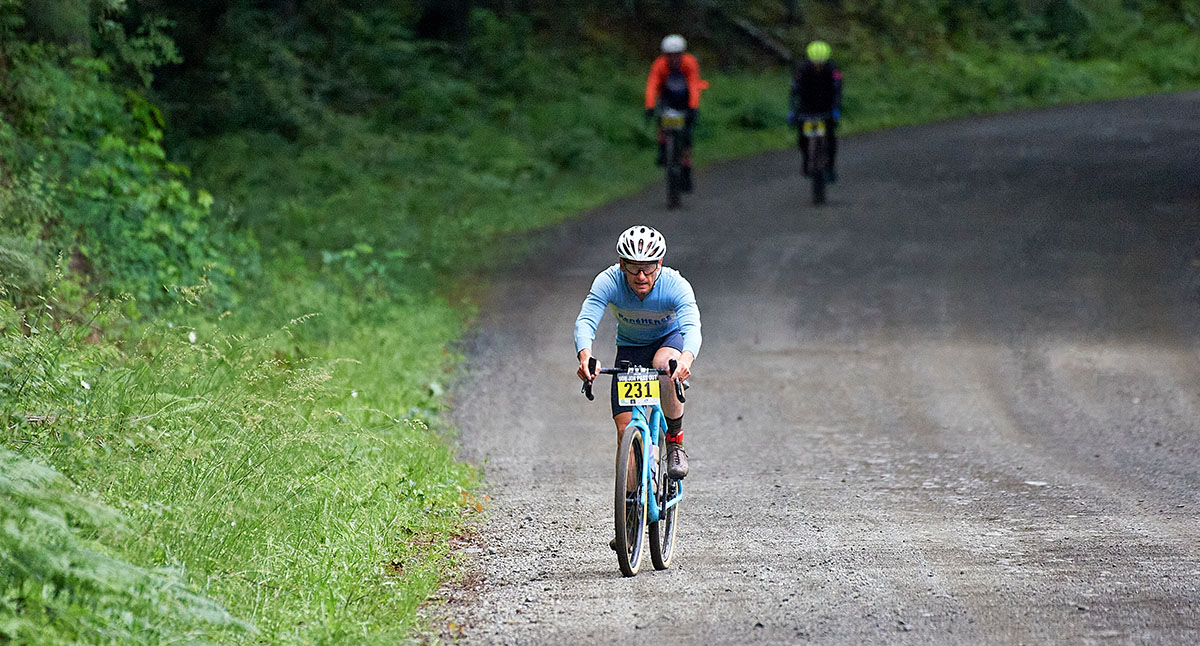Gravel Racing in the Mountains
I’m riding in a world of green and white. Evergreen tree branches are above my head. Ferns grow by the roadside. Moss covers the tree trunks. All are different, vibrant shades of green. Anything beyond the next fifty meters disappears in the white fog of low clouds and drizzle. The wet gravel crunches softly under my wheels, just loud enough to be audible against my breathing. I’m breathing hard. I’m climbing. I have been climbing for one-and-a-half hours, since the start of this race, with just a short two-minute descent to catch my breath. Except that the road was so steep that I was still breathing hard—from the concentration to keep my bike on the narrow band of gravel while I was plunging down the mountainside at speeds of 50+ km/h (30+ mph).
My love for gravel riding developed in these mountains, and I’ve often wondered why there aren’t any major gravel races that climb the high passes. After all, the greatest road races are famous for their cols. And Mount Townsend, for that is the mountain I am climbing, ranks with the best of them. Strava shows this climb on the back side of Bon Jon Pass as ‘Hors Catégorie’ (Beyond Categorization), meaning its challenge—based on length and steepness—is off the charts. That puts it on the same level as the great climbs of the Tour de France, the Galibier, Tourmalet and Alpe d’Huez, but this one is on gravel.
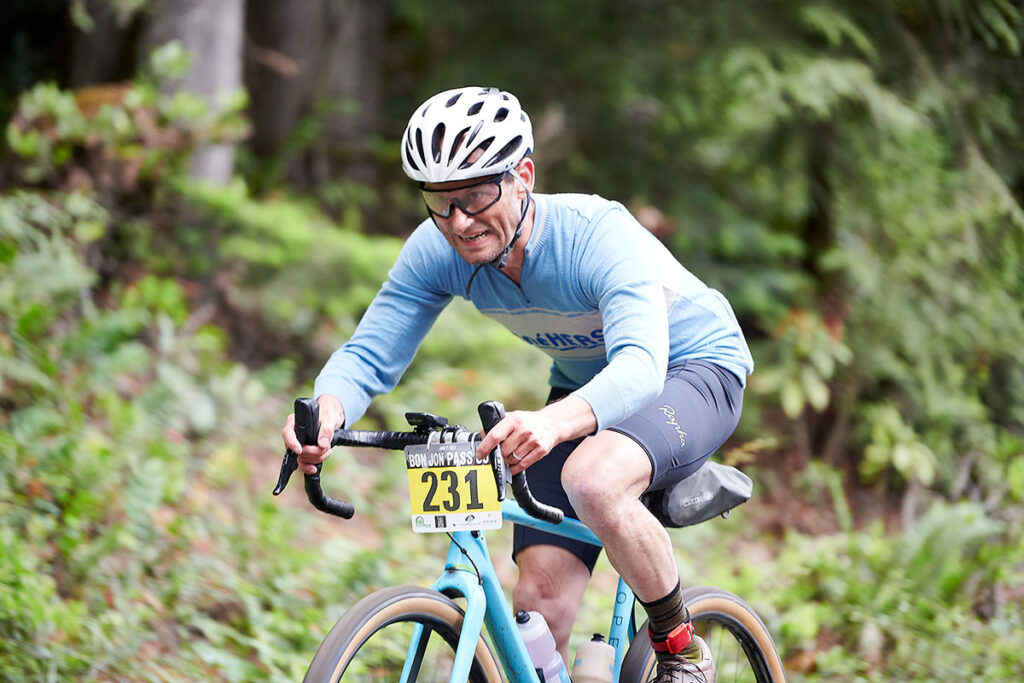
My legs agree with this categorization. I’ve ridden the Alpe d’Huez, and this feels similar. The elevation gain is the same. The climb up the backside of Bon Jon Pass is a bit longer than the most famous climb of the Tour de France. It’s also a little less steep, but the softer gravel surface means the power requirements are similar. I used to love pushing the pace on steep mountain slopes, but I retired from road racing years ago. Focusing on long distances instead, my all-out speed has suffered a bit since then. And yet, when I found out about a gravel race across some of my favorite terrain—a race that climbs Bon Jon Pass not just once, but twice—I just had to enter. When the weather forecast turned from sunny to showers and then to a “small chance of rain,” that did not change my resolve. I’d been to Bon Jon Pass twice: Once in the snow, and once on a summer day with pouring rain. Each was a thoroughly enjoyable experience. And so is today.
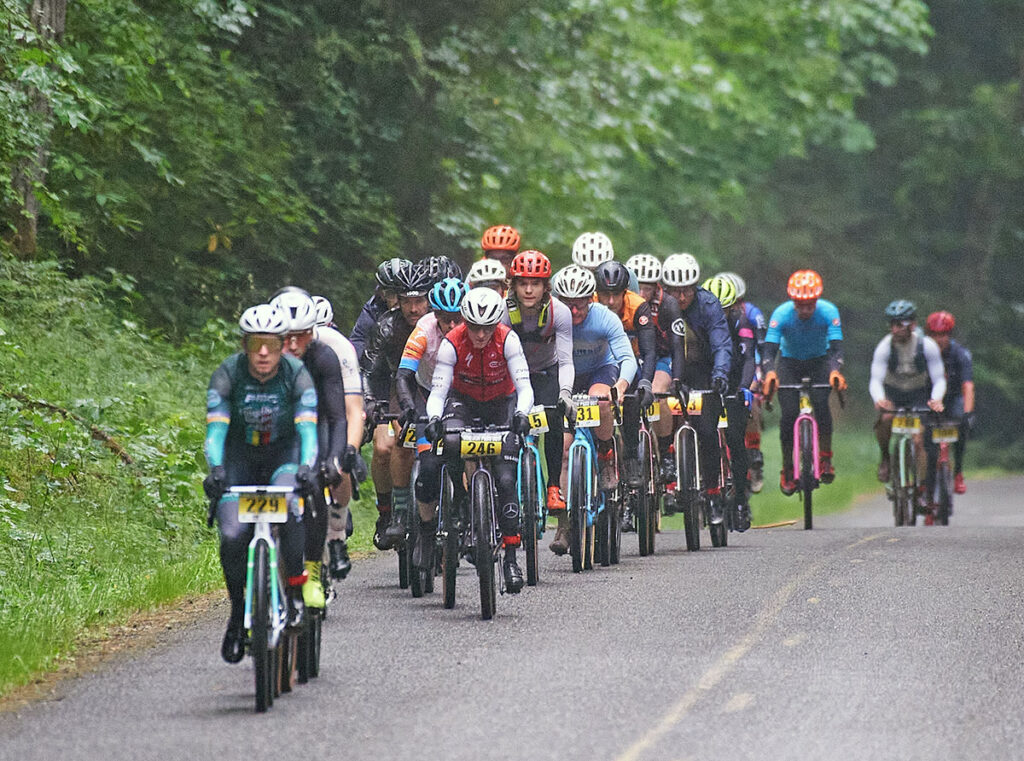
The pack rolled out of the tiny town of Quilcene, where the race is based, at a rapid clip. The road started climbing almost immediately. With each kilometer, the road became smaller and narrower: We started on the highway that runs around the Olympic Peninsula, then turned onto a forest road. A little later, the road narrowed, and the center line disappeared. Then it turned to gravel.

Similarly, the pack decreased in size. I had forgotten how fast ‘real’ racers are… As the truly fast riders went up the road, the remainder of the pack formed little groups, then split up again as everybody climbed at their own pace. On a course that’s all up and down, there’s little benefit in drafting.
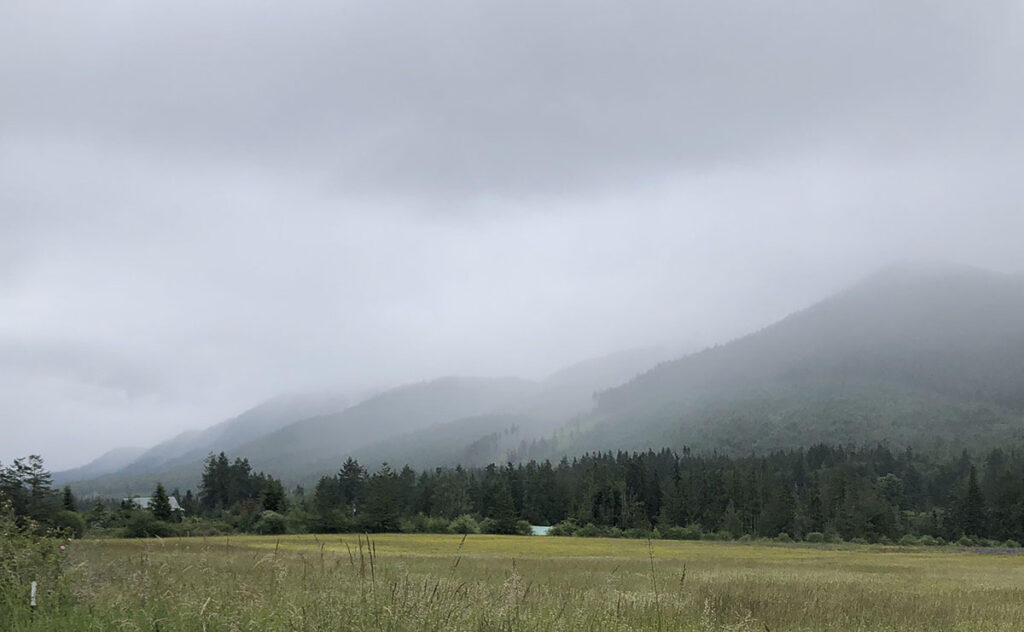
The course was beautiful, weaving together some of the best gravel roads in this region, plus a little asphalt. There was even a section of rough double-track that required mountain bike skills, especially since it got muddier as the day progressed. (We got to ride it twice as it connected different approaches to Bon Jon Pass.) There was a brief interlude in a beautiful valley at the northern edge of the course (above), with the mountains shrouded in mist forming a dramatic backdrop. It wasn’t long before we returned to those mountains for another long and steep climb.
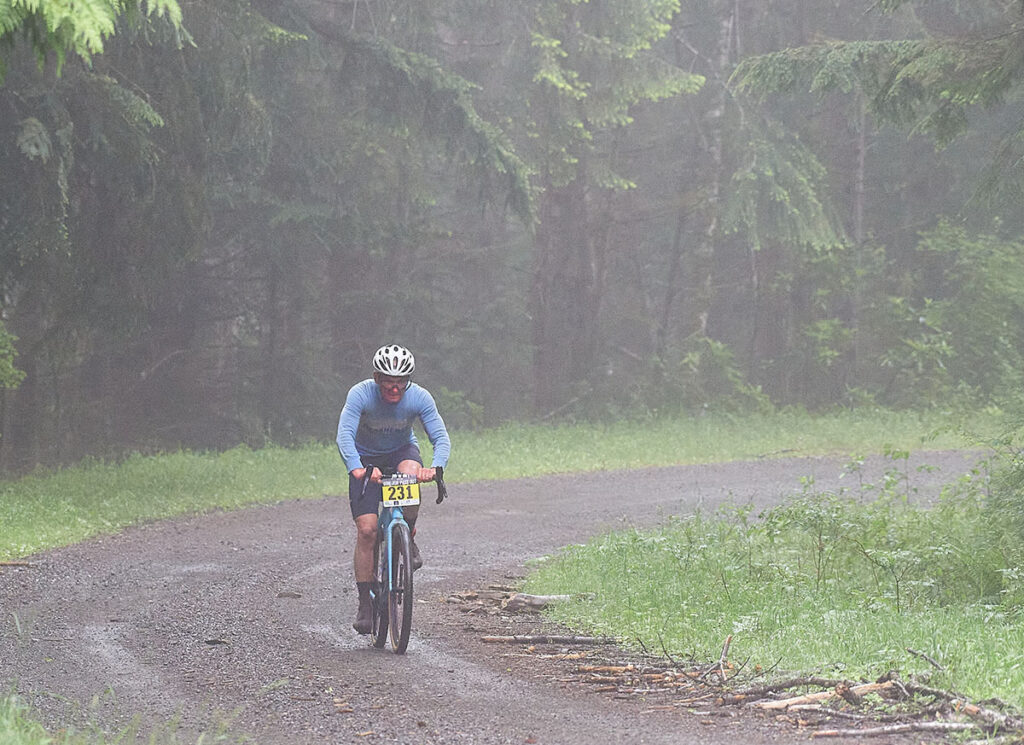
What to wear? During long events, I simply pack for all eventualities. In a race, there’s no time for changing clothes and nowhere to carry them, so it’s key to predict what conditions will be like. Which is much harder when the course starts at sea level, reaches elevations of 3,700 ft (1,130 m), and the forecast can’t decide whether it’ll rain or be sunny. At the last minute, I ditched my underlayer and decided to go with just a long-sleeve wool jersey. Just in case, I had a superlight rain jacket in my underseat bag, together with two spare tubes, my NUDA pump and an emergency ration of yokan, the Japanese bean paste. My plan was not to open that bag…
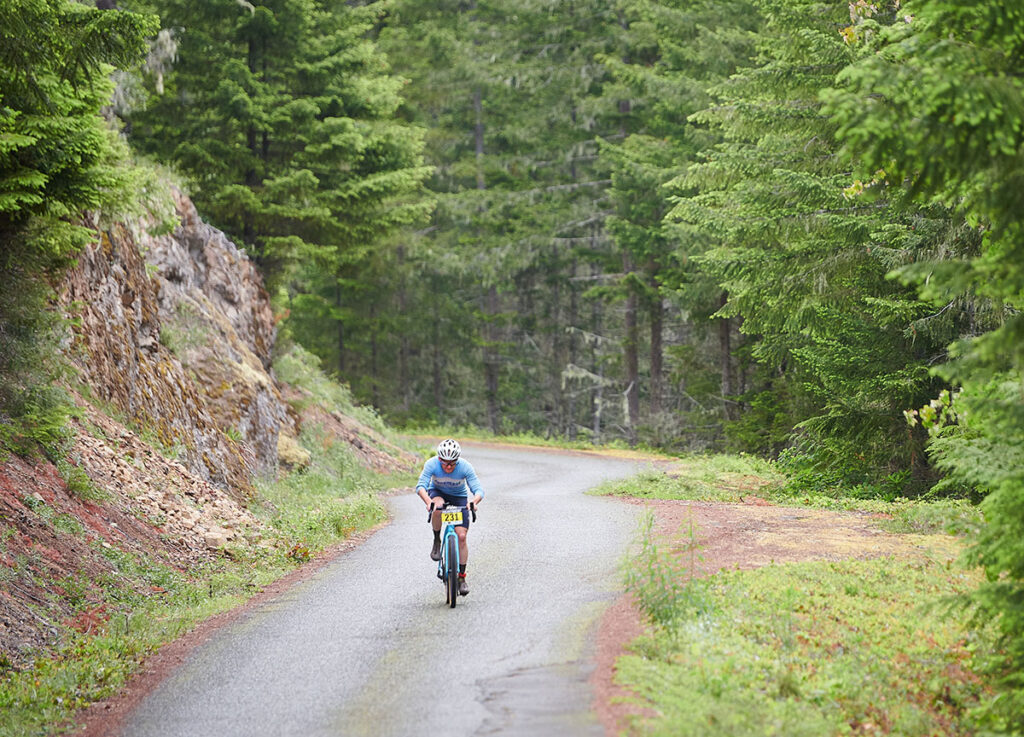
Just before reaching Bon Jon Pass, the second climb in the race and ‘merely’ classified as Second Category, the sun briefly pokes through the clouds. I immediately get warm. Just ahead of me is a rider in short sleeves, and I suddenly think he’s made the right choice. I push up my sleeves, but then the clouds move in again. It starts raining and never really stops. For the remaining four hours of the race, I envy the riders wearing more, not fewer, clothes.
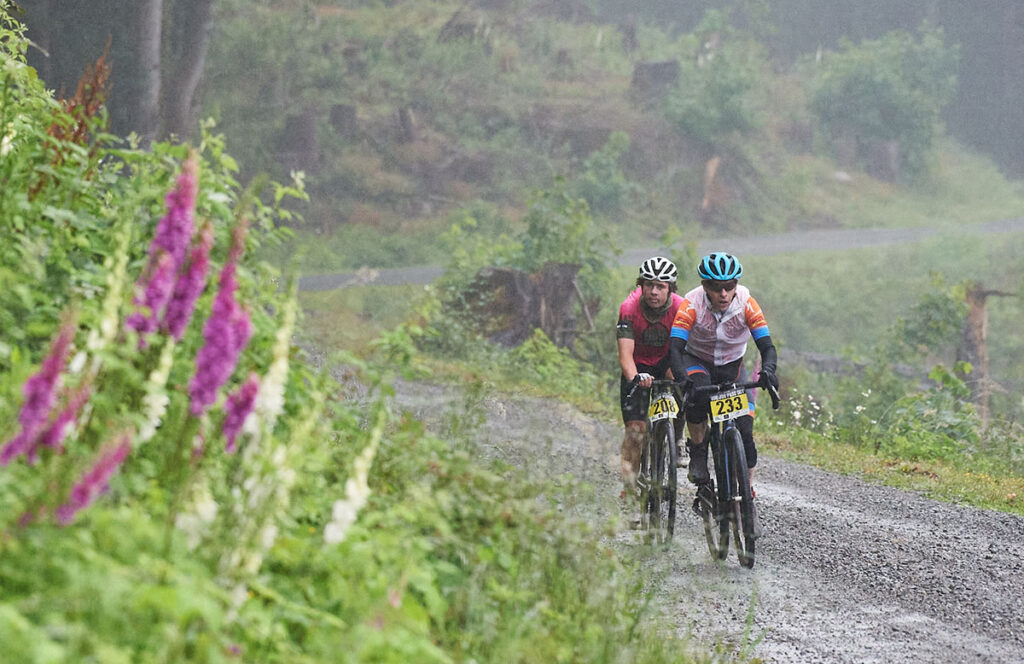
The race attracts cyclists of all types. There are plenty of ultra-fast racers, like Thomas Horan (233) and Angus Rate (208), who finished 3rd and 4th…
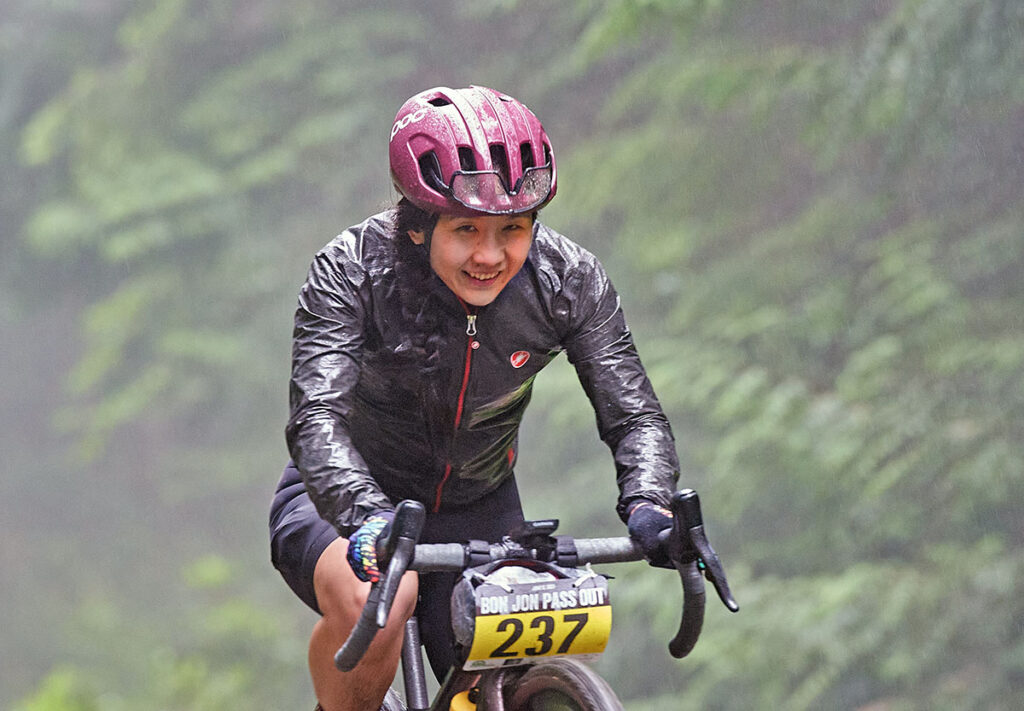
… and Frances Sun, who was 2nd among the women.
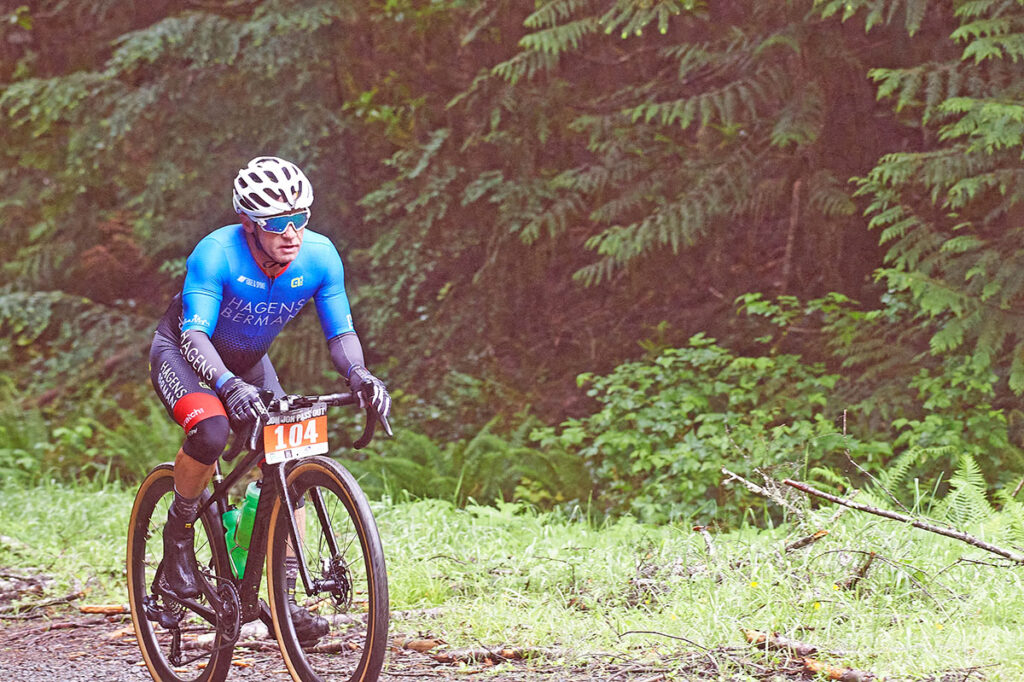
In addition to the 80-mile ‘Long’ course that climbed Bon Jon Pass twice from different directions, there was a ‘Medium’ 50-miler and a ‘Short’ 35-miler, plus the option to ride each course as a non-competitive Gran Fondo. This brought out a great variety of riders—above is Timothy Skattum on his way to 5th place in the over-45 age group on the Medium course. All courses climbed the ‘Hors Catégorie’ Mount Townsend and Bon Jon Pass, so no rider missed out on the best parts of the course.
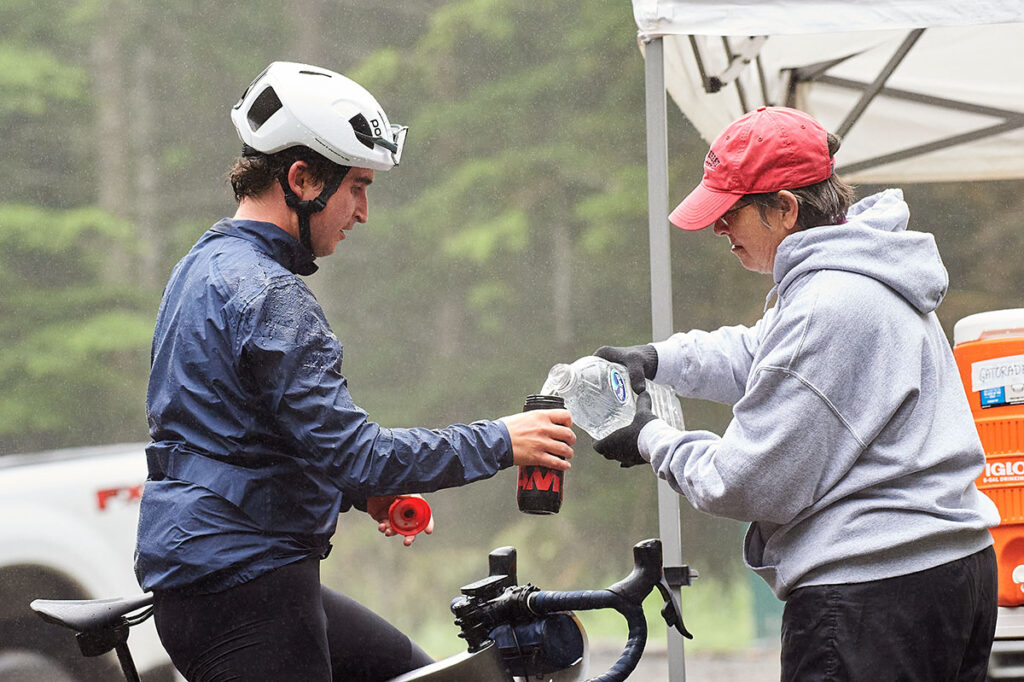
This race is part of Gravel Unravel, a comparatively small three-race series with virtually no publicity. It reminded me of the early days of racing in many ways. Everybody was friendly, even though we were racing against each other. I passed Harrison Winkel (above) on the first climb, he found his legs and re-passed me a few hours later, before suffering cramps on the second ascent of Bon Jon Pass and stopping at the water station near the top. I passed him again, but the short rest had done him a lot of good, and he got away on the rolling section after the top of the pass. One-and-a-half hours later, he finished a few minutes ahead of me.
Racing in the mountains presents its own challenges. The descents are ultra-fast, and since the roads aren’t closed to traffic, caution is required. Some racers’ tracks showed that they were willing to take risks in blind corners in exchange for a few seconds gained, but everybody I saw opted for safety. The spray while descending muddy roads at 30+ mph (50+ km/h) was the biggest challenge. Keep your glasses on, and you can’t see. Take them off, and your eyes fill with water and sand—and you can’t see either.
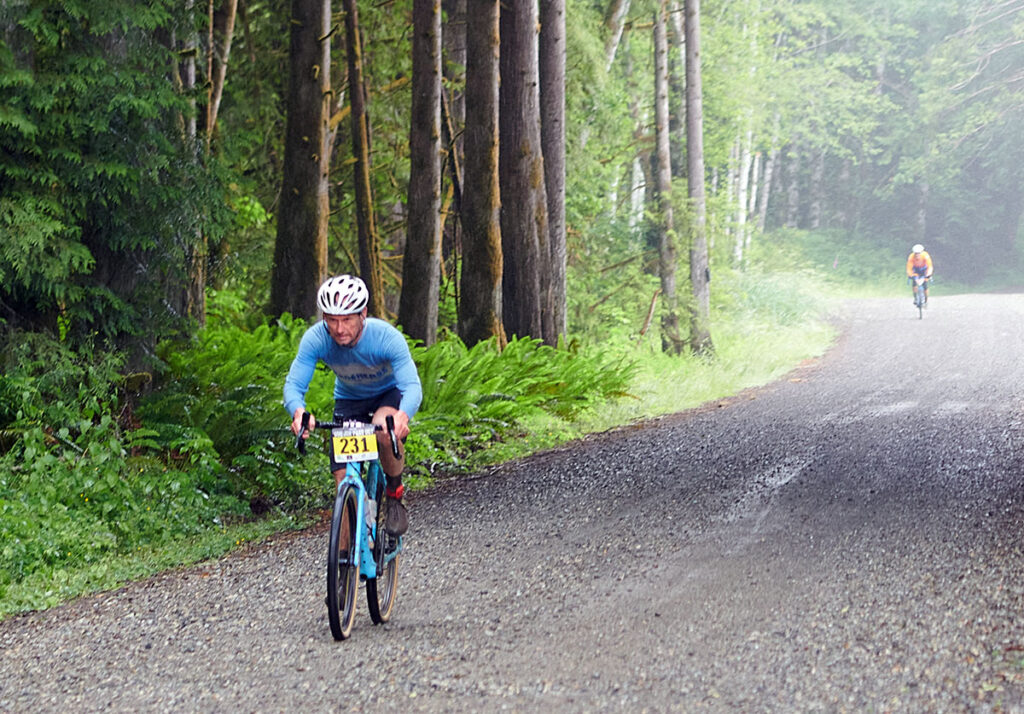
For this race, I swapped my knobby Juniper Ridge tires for smooth Switchback Hills. Same 650B x 48 mm size, same Extralight casing. Why no knobbies? I figured that if it rained overnight, as the forecast predicted, and the course then dried out, knobs might increase resistance in the drying mud: They might work like suction cups. Better to have smooth tires that roll over the surface without making any impression.
There was no way to test this hypothesis, as the surface never dried, but wide tires provided a tangible advantage where the gravel was loose. Toward the end of the race, I had been chasing another racer for a while without making much headway. When the gravel became deeper and looser, his speed dropped much more than mine. Looking back, I could see that my tires made almost no impression in the surface, whereas the narrower tires of other racers had made deeper tracks—which means they had displaced more material, which takes energy and slows the bike.
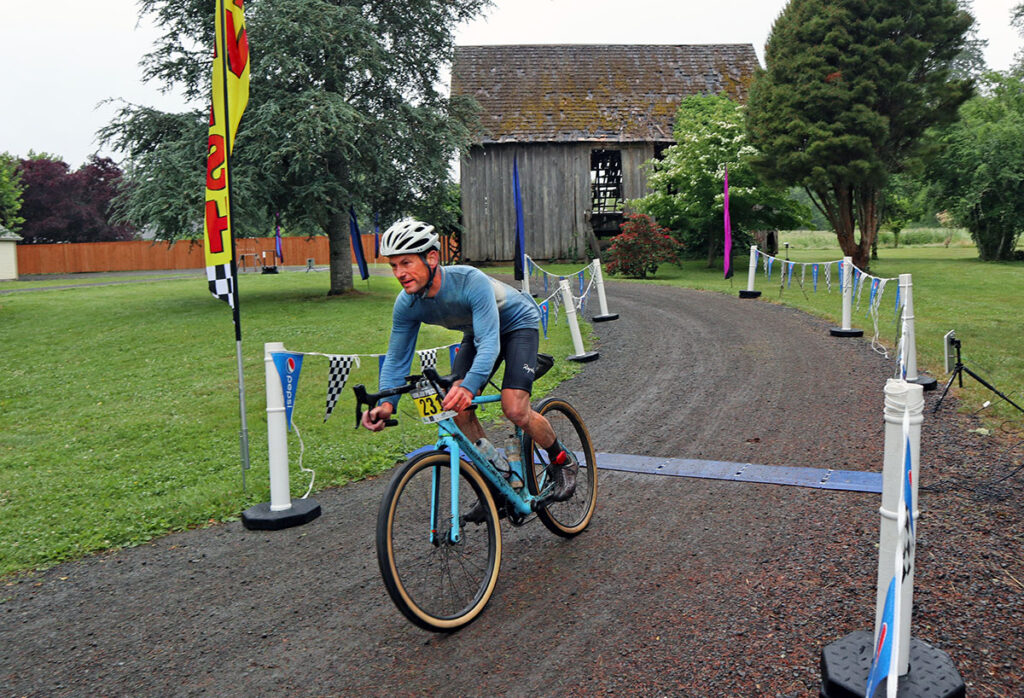
After five hours of racing, I realized that I could finish in less than six hours, if I put my head down and averaged more than 19 mph (30 km/h) for the remainder of the race. With a few downhills coming, that seemed possible. In the end, I finished in 5:54 hours, 15th overall and 5th in the over-45 category.
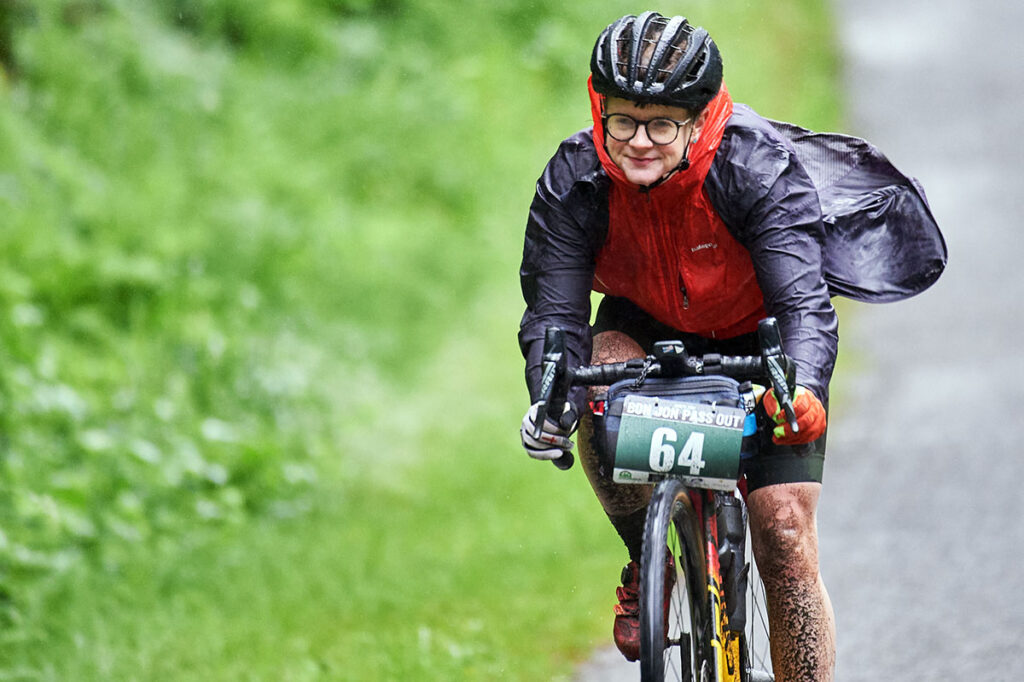
More important than results was the beauty of the course, the challenge of climbing and descending so much elevation, and the great atmosphere among truly nice people—with a special shout-out to the organizers Lorrie and Buck. Despite the inclement weather, everybody seemed to have fun (above Kayt Mathers). Peninsula Adventure Sports have created a truly outstanding gravel event. Part of the proceeds go to a local charity, and the town of Quilcene is truly enthusiastic in its support of the event. If you enjoy riding in the mountains, you won’t regret coming out next year—or joining the last ride in the series, near Humptulips Ridge, on July 22.
Further information:
Photo credit: Daniel James, pursuitphoto.com (all photos except 4 and 13)


